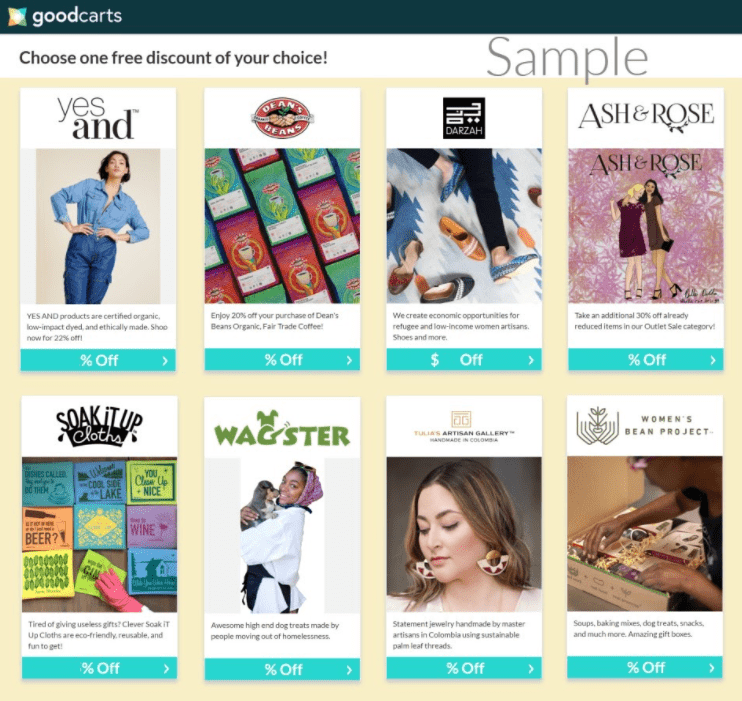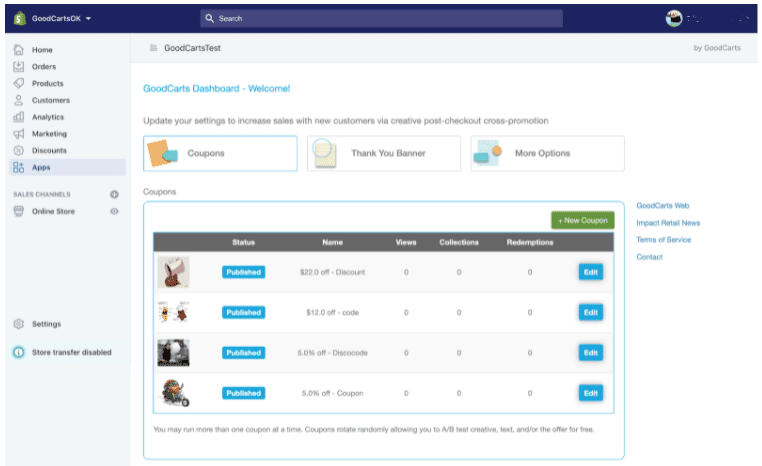Ecommerce Discounting is a practice we see brands leveraging day in and day out – but how can you be sure you’re optimizing your discount strategy? And where do ethical considerations come into play?
It’s important for retailers of all kinds to carefully consider their approach to discounting, but in the competitive world of ecommerce it’s especially vital. With rival sellers just a couple of clicks away, and consumers used to shopping around, your pricing strategy can be a make or break element of your business.
In this article, we’ll explore key considerations as an ecommerce brand or retailer looking to get the most out of your discounting strategy while remaining true to your brand values.
Understanding Customer Psychology and Discounting
Let’s start out by exploring the reasons why discounting exists. For as long as people have been trading, prices have been up for debate. Whether this comes in the form of active haggling, or an enticing price drop, the goal is the same – get that sale across the line.
The psychological impact of discounting rests on perception. The consumer has to believe that they are gaining a real advantage, whether that be a lower price, or getting more for the money they pay. A discount set at the right rate has the power to convince customers of this, as well as accelerate and pressurize the sale. We’re opportunistic creatures – in this respect, things haven’t really changed much since the days of our Neolithic ancestors. In the short term, when presented with something that looks like an easy win, we tend to buy first and think later. However it’s important to think about the longer-term impact on customer behavior too – how tough will it be to convince a customer who’s grown accustomed to discounted rates to pay full price in the future? Or will a great first brand experience be enough to encourage repeat custom?
One thing’s for sure – customers love coupons. Emails that include coupons have a 48% increase in revenue per email. The value of digital coupon redemptions is expected to balloon to $91 billion by 2022, up from $47 billion in 2017.
Discounts can be a great way to entice customers to try a high quality product for the first time that they would otherwise pass over in favor of a cheaper brand. This is a really important consideration for ethical brands which may need to charge a more premium price to reflect their production methods.
We often hear that people say they are willing to pay more for sustainable products but sadly the stats don’t always match up to real-life checkout habits. Discounting can be a way to get around the barrier of higher-priced, ethically sourced products – a sort of trojan horse to get customers converting (and able to appreciate the difference in the product as a result.)

In fact, a little known field study testing the impact of a 20% discount versus signage highlighting the positive impact of fair trade working conditions on coffee growers, showed that discounting may be the only way to secure a marked initial uptake in a more ethically produced product. Food for thought…
Common Discount Strategies
Let’s explore a few popular approaches to discounting within the online retail sector.
Buy One, Get One Free
A classic example of a retail discount, and one that’s especially useful for clearing out excess inventory. The gross margin on a product needs to be able to carry the impact of the additional item in order for a profit to still be achieved, but this can be a great way to clear space for new products or to shift a larger volume of items that have a limited shelf life or are seasonal in nature.
Ethical Considerations: Buy One, Get One Free (BOGOF) offers are often seen to be encouraging excessive consumption, with the consumer taking (and wasting) more than they need.
Free Shipping
A very popular option for ecommerce stores across most verticals. Shipping costs are a known contributor to cart abandonment – 36% of people were put off buying something because they felt the delivery costs were too high. Offering free shipping is a great way to boost sales, average revenue per user (ARPU), and loyalty.
Ethical Considerations: Free shipping or returns could encourage customers to make purchases they intend to return, causing unnecessary emissions.
Threshold Discounting
This technique sees retailers offer a sliding scale of ever-increasing discount percentages, as cart value increases. This helps to boost average order value (AOV) significantly, as customers are tempted to add more to their carts to unlock a higher discount.
Ethical Considerations: Again, excessive consumption could be seen to be encouraged with this practice. Purchases are more impulsive and less mindful, as opposed to a more considered and necessary purchase.
Modern Trends in Ecommerce Discounting

What does the current discounting landscape look like within the world of ecommerce? Beyond the promotions run by individual brands and retailers, there have been a number of recognizable trends emerging in recent years that seem to span the industry.
“Super sale events” definitely fall within this category. Black Friday/Cyber Monday (BFCM) still dominates the Western shopping calendar, but increasingly Singles Day, which has its origins in China, is enjoying an increase in global popularity.
For several years now, opinion seems increasingly split when it comes to these “mega sales.” Many brands have opted out of this annual race to the bottom (and made a lot of noise about their reasons for doing so). And yet consumers still continue to turn out in droves, with BFCM sales for Shopify-hosted stores alone up 76% on previous years in 2020.
Flash sales have also seen a rise in popularity – typically linked to “collection” based brands who have regular “product drops.” These rely on social media presence, a sense of urgency, and a loyal customer base who are willing to make a snap decision for a better price. Mid-range products such as branded apparel and electronics tend to do well with this kind of strategy.
Increasingly, third-party apps are also being leveraged to add an engaging extra element to the discounting process. These can often be triggered by exit intent, adding a gamified “try your luck” element to the discount offered. Of course, GoodCarts is another example of a third-party integration that can help you get your promotion in front of a pre-qualified conscious consumer audience.
What Kind of Discount Strategy Is Right for You?
When embarking on your own discounting adventure, it’s important to take into consideration the unique circumstances of your existing audience, vertical and wider market. Before anything else, ask yourself – what do you hope to achieve with your discounting? The impact of a discounting strategy can go far beyond simply boosting sales.
For example, you might want to offer a discount code in exchange for newsletter signup. 70% of subscribers open promotional emails looking for a discount or special offer and 80% sign up for newsletters in order to receive discounts.
You’ll also need to do the math – what’s your expected ROI , and how will you keep track of your discounting strategy? Plan the messaging around your discount delivery – retargeting email campaigns that “count down” the validity of the promo code (“only valid for 24 more hours”, “your promo code expires today”) can create a sense of urgency and encourage action.
It’s worth remembering that according to MarketingProfs, 57% of US shoppers who used a coupon code said that if they had not received the discount, they would not have made a purchase with the brand in question – so in order to convert that all-important first sale, a discount is a winning strategy. However, when it comes to discovering if an introductory discount is enough to win repeat customers happy to pay full price, you’ll need to carefully monitor the impact of your strategy on customer lifetime value.
Discounting Pitfalls to Avoid
What are the risks associated with discounting? It would be inaccurate to suggest that slashing prices brings only positive outcomes. There are, as with any ecommerce strategy, pros and cons to be considered.
Brand value (and the erosion of it though cut prices) is something often cited by “premium” brands that opt-out of discount culture. Certain designer brands (such as Hermes and Louis Vuitton) famously never go on sale, and don’t run outlet stores, and equally, brands such as Apple aren’t commonly associated with red sticker items. Interestingly though, 53% of adults living in high-income households (earning $200,000 a year or more) say that they would be willing to switch brands for the sake of using a coupon.

At the other end of the spectrum, there’s also a need to be aware of consumers getting too used to regular discount drops or flash sales. Conversion may dip or even stall in anticipation of an upcoming promotion. To avoid this, brands need to be aware of the regularity with which they are offering reductions – are their audience becoming habituated to the practice? If so, it’s best to look at ways to encourage a reduction in purchase latency, such as a loyalty program, or the scarcity value of limited editions or new product drops.
Discounting for Ethical/Sustainable Brands
As ever, when applying a common ecommerce principle such as discounting to the business of an ethical, sustainable, or values-led brand, there are extra considerations. Will you be able to continue to pay a fair price for your products if your margins are eroded by discounting? It’s worth thinking through the ways that you can afford the price reductions without passing on this impact to your suppliers or impacting your employees negatively.
As this article has already briefly touched upon, a “flash sale” mentality or the offer of unnecessary free gifts or bonus items can also feed a culture of excessive consumption and a needless drain on resources, additional emissions, and waste.
Discounts for values-led brands should be sustainable, practical, and not at the expense of anyone but the retailer deciding to factor them into their own bottom line.
How to Get the Most Out of Your GoodCarts Discount
GoodCarts is a cross-promotion platform that helps like-minded, values-led brands work together to offer post-purchase discounts to each other’s customers. By providing these promo codes after a sale has been made with a similarly ethical retailer, the audience is perfectly targeted.

By offering a discount to this pre-qualified segment, retailers can “seal the deal” – converting a new first-time customer to a brand they have never used (or possibly even heard of) before.
With exclusive GoodCarts discounts requiring an email to claim, your promo code stays out of Google and isn’t discovered by your shoppers searching just before checkout.
There’s plenty you can do to ensure that your coupons have maximum appeal and uptake. A great product image is key, and this should be paired with clear messaging about the impact that your brand strives for. A/B testing is included as a feature of this free app and is a great way to refine your creativity, helping you find the most effective format as you continuously refine and optimize your design and offer.

Keep your coupon copy short and snappy (there’s a 100 character limit for the main call out). Remember that you’re trying to catch attention and motivate people to take action, so spark curiosity and interrupt thought patterns. Asking a question is a classic way of achieving this. It can also help to ensure that your offer is exclusive to the app (again, creating that “one time only” sense of scarcity) and not available elsewhere.
By creating the right brand moment, customers will redeem and be introduced to your brand – the first step towards what will hopefully become an ongoing and profitable association. GoodCarts member brands typically see between an average 10% redemption rate for claimed coupons – so take this as your starting point and look for incremental improvements through copy and design.
Great Value and Great Values
Discounting, when done correctly and conscientiously, represents a huge opportunity for ecommerce brands, but there’s a definite need to take a considered approach. From a financial and ethical point of view, care needs to be taken to ensure that the considerable benefits outweigh any risk to perceived value or brand impact.
GoodCarts offers the ideal solution for values-led brands looking to retain their perceived worth whilst adding value and incentive. What’s more, as a completely free application, with no hidden costs or fees, brands have complete control over their margins.
If you’re looking for an approach that strengthens your brand positioning, whilst at the same time reducing the barriers that a cautious first-time buyer might otherwise experience, then a GoodCarts campaign represents an excellent opportunity.
Ready to start experimenting with a perfectly positioned ecommerce discounting strategy?
Get started with GoodCarts today, for free.










